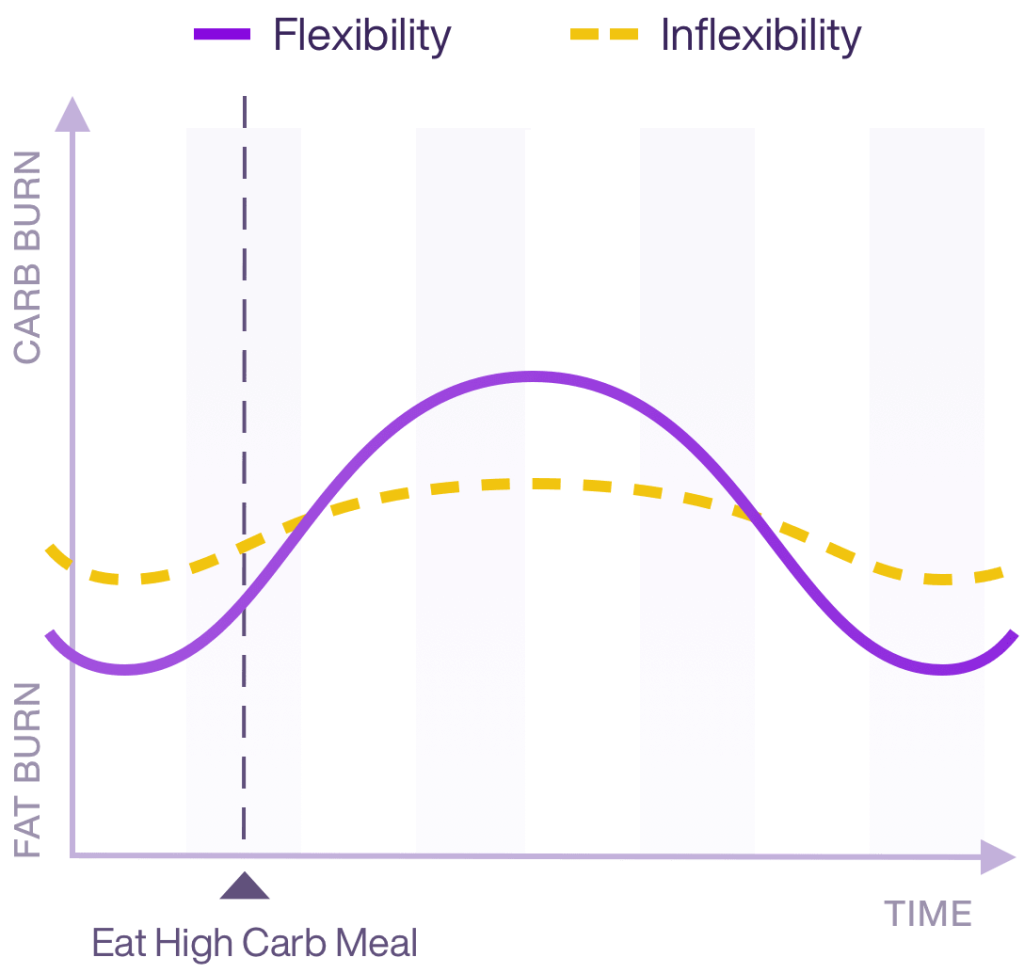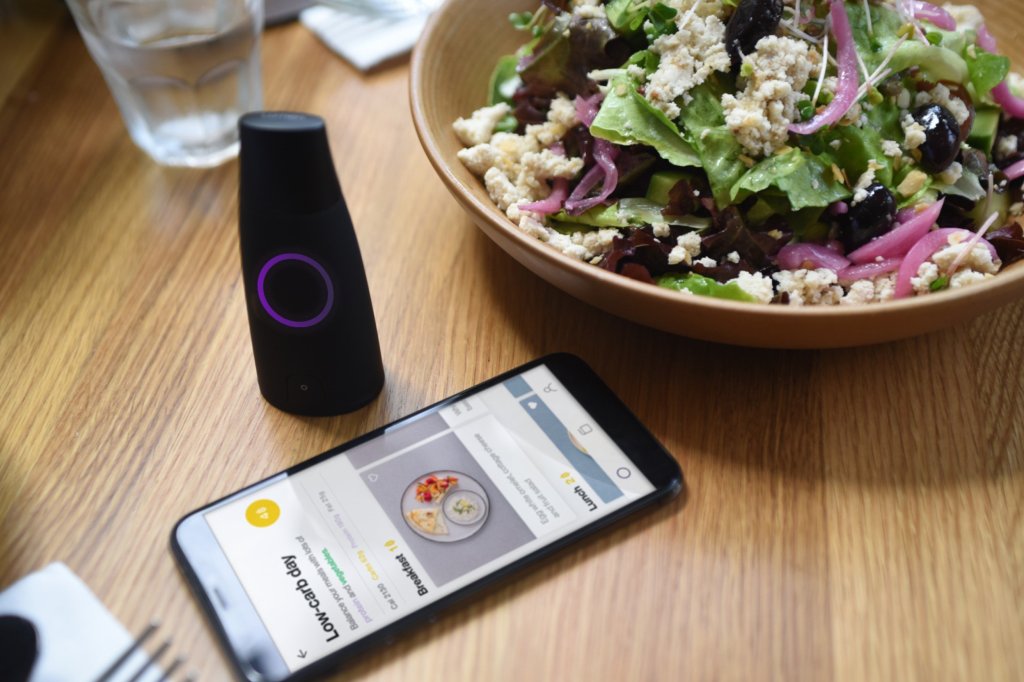How a metabolism tracker works
For a woman at the beginning of menopause with a new midlife-middle, belly fat that won’t budge, fave jeans that don’t fit, sleep disturbances, and becoming more carb-phobic because I was afraid of gaining more weight, I set out to get some help from science. I knew there was a way to get insights into why and how I could manage my body composition without dieting or restricting because that went against everything I believed in as a Holistic Nutritionist.
I know how to eat well, I know the science behind weight loss, and I know that weight loss is about more than self control. So, as I approach menopause and am now experiencing the changes in my body composition that my clients have been telling me about for years, I find myself feeling the same frustration. I don’t have time to experiment, nor do I find it effective. I like to see numbers, results, proof. I’ve always worn a FitBit, an Oura ring, I use habit tracking apps, and check my metrics to see how I am doing and where I can improve. So, when I learned about a metabolism tracker that could give me real time insights into how to shed the menopause middle, I was in.
A metabolism tracker is a tool or device designed to monitor and measure your metabolic rate. It can track changes in your metabolism over time and may provide insights into how your body processes energy. Some metabolism trackers use wearable technology or other methods to collect data such as heart rate, body temperature, and activity levels to estimate your metabolic rate. This information can be useful for understanding how your metabolism responds to different diets, exercise routines, and lifestyle changes.

Metabolic health is the main player behind health, weight loss, energy, longevity and metabolism.
Can you actually hack your metabolism?
Yes, you can influence your metabolism through various lifestyle factors such as adequate sleep, timing of meals, intensity of exercise, and balanced nutrition. Additionally, building lean muscle mass can also have a positive impact on your metabolic rate.
Here is how my experience went
I ordered my tracker and got it in 3 days. I had downloaded the free app that accompanies it, so I was all ready to go. The way this device works is by measuring the CO2 levels in your body with a single breath and gives you a snapshot of your metabolism at any point in the day. The CO2 concentration is measured by inhaling deeply through the device (dynamic to each individual), holding it for 10 seconds, and exhaling fully. My initial try didn’t work, but once I watched a video and learned how deeply to inhale and exhale, I had it nailed.
The first 10 days of using the device is to set a baseline with your current health, nutrition, sleep, and exercise. I measured my levels first thing in the morning each day, then would use that information to plan my meals. Was it going to be a low carb or high carb day?
Honestly, because I was 15 pounds heavier than I felt comfortable at, and navigating through pre-menopause changes, all of my first 10 days were low carb days. But, the app gives you the exact grams or portions of carbs, proteins, and fats to eat to help master your metabolic flexibility.
When your metabolism is efficient, you can eat and burn carbs instead of storing them as fat.
Once you become metabolically flexible and can efficiently switch from burning fats to carbs and vice versa, you will be given high carb days. A result like this is positive because you want to continue to challenge your metabolism. When your metabolism is efficient, you can eat and burn carbs instead of storing them as fat. Carbohydrates are essential to our body, especially as our primary source of energy, and they influence everything from cellular function to overall metabolic health. Society has become afraid of carbs but there are different types of carbs and restricting them can have negative consequences on your hormones and overall health.
On the other hand, eating too many carbs or the wrong kinds of carbs can throw our bodies out of balance, can cause energy drops due to the rapid increase and crash in blood sugar levels, and can lead to fat storage. Once your body becomes good at switching between your fuel sources, carbs will be a bigger portion of your diet. Benefits of carb cycling are
- Sustained energy levels throughout the day
- More efficient weight management
- Stable and healthier blood sugar levels
- Maintenance of lean body mass
- Balanced hormone function
What is metabolic flexibility?
Metabolic flexibility refers to the body’s ability to efficiently switch between using different energy, such as glucose and fatty acids. It allows the body to adapt to different conditions, such as fasting or exercise, by adjusting the usage of available energy substrates. This flexibility is important for overall metabolic health and can be influenced by factors such as diet, exercise, and genetics.

This daily routine gave gain more insight
Here are the steps I followed each day:
- Take a reading upon waking (before coffee) to see if my body is currently burning leftover carbs or stored fat. The goal is to wake up burning fats, not carbs
- Work out fasted and log it in the app. I calculated my fat-burning heart rate and stayed within that range while I did indoor cycling with a podcast or playlist on for 20 minutes. I would head directly out for an additional 15 minute walk with the dog while my heart rate was still slightly elevated. After checking my Fitbit post-workout, I was always pleased to see that I was, in fact, burning fat all those minutes. Why work out fasted? If I woke up to learn that I was still burning carbs, then those leftover carbs could easily fuel my workout. If I woke up burning fat, because I wanted to lose weight, this was a perfect chance to use fat as my fuel source
- Breakfast time: I would create a meal based on the macro suggestions that the metabolism tracker suggested for the day. Usually, this was a higher protein breakfast with minimal starches, if any. I usually alternate between a greek yogurt/berries/almond butter/spinach smoothie, and scrambled eggs with lots of veggies
- I would go about my day, preparing for lunch by following the macros that were suggested in the morning. The suggestions provided through the app were always helpful and always had the perfect ratio of macros that I needed so there was little to think about, other than making sure I had those ingredients on hand. After lunch, I would log the meal through the app and it would show me how many carbs, fats and proteins I had left for dinner
- BONUS: If I did more exercise, snuck in an additional brisk dog walk, or got my heart rate up in the day, I would log it through the exercise tab on the app. Depending on the duration and intensity, I would occasionally get bonus carbs to help restore what I had burned
- Dinner was the same process although I had to be even more strategic because there were times that I was nearing my daily limit of carbs, and often was way below my protein recommendation. Timing of meals is important here as you want to finish eating for the day well before 8pm to give your body time to burn more fat during sleep
- Walk for 15 minutes after dinner to help digestion, lower blood sugar, and burn additional carbs before sleep. Take a final reading one hour after dinner
Protein is crucial for a healthy metabolism, as it helps support muscle mass and boosts calorie burning.
My results
After 3 weeks of consistently (consistency is key to any goal!!) taking readings, being mindful of my heart rate during exercise, and staying within the suggested macros in my meals, I was pleased to see that my metabolic flexibility score improved. I was more easily moving from burning carbs to burning stored fat. And, this is just the beginning! Now that I know how to hack my metabolism, I am a student for life. I also look forward to seeing more carb-heavy days on my plan.
Most mornings, my score was a 4 or 5, indicating that I was burning carbs for energy for the day. The goal, according to the product website is to wake up with a score of 2, meaning you are burning fat for fuel. To my great surprise, I finally made it to a level 2 on day 12 of my tracking journey and that pushed me to wake up to level 1, which I did by day 14. I was successfully becoming more metabolically flexible through consciously tracking my progress, meals, timing of meals, and heart rate during exercise. It all made a difference in my metabolism and I was starting to lose the weight that I had trouble losing when I was not using a tracker
I logged every meal and glass of wine I consumed. For foods that I ate from a restaurant or package, there is an option to scan a barcode or enter the macros from the nutrition label manually.
I started sleeping better and, in fact, was getting some of the highest sleep scores ever since I started tracking my sleep about a year ago. My deep sleep and REM scores were the best I had had in years, which helped my mood, cravings, and energy levels the following days.
As a result of burning more fat and efficiently burning carbs, I lost pounds and felt so much less bloated. I did this not by eating less, but by eating and exercising differently. I’ve never recommended counting calories, but counting macros is very efficient to reach your goals. As a woman in mid-life (50), having excess belly fat, as I do, is actually a health concern. A waistline over 35 inches for women can increase your risk of metabolic syndrome. Something I always remind my clients of is that, in order for weight loss to be sustainable, a loss of 1-2 pounds per week is perfect. Any more than that is when your body starts to fight you. Your brain tells you to eat more carbs, you might have more cravings, and quick weight loss can lead to high cortisol levels that affect your sleep and mood. Go slow, be strategic, and make it fun!
What is metabolic syndrome?
Metabolic syndrome is a cluster of conditions that occur together, increasing your risk of heart disease, stroke, and type 2 diabetes. These conditions include high blood pressure, high blood sugar, excess body fat around the waist, and abnormal cholesterol levels. Having one of these conditions doesn’t mean you have metabolic syndrome, but it does increase your risk. Having more than one of these conditions is even more dangerous.
Would I recommend a metabolism tracker?
Absolutely. From working with mid-life women around weight loss for years, I am confident in saying that weight loss success is built around science and metrics, and accountability. Using this device gave me insights that I did not have before using it, plus it helped me stay accountable to myself, track my progress, alter what I needed to be successful, and it’s all based on science.
I always say, “Test, don’t guess“, and this tracker now goes everywhere with me. It’s smaller than a cell phone, comes in a little carrying case, and the battery lasts days. You can test your metabolic flexibility at any time of the day, from anywhere. Being backed by science and a group of medical practitioners that I follow and admire in the holistic wellness space, I trust it enough to recommend to all my clients, friends, and community. Overall, I am extremely happy that I found this health tool and now I get to share it with you.
The company generously gave me a discount code to share with my community. Save big when you use code helloholistic at Lumen.com









Leave a comment